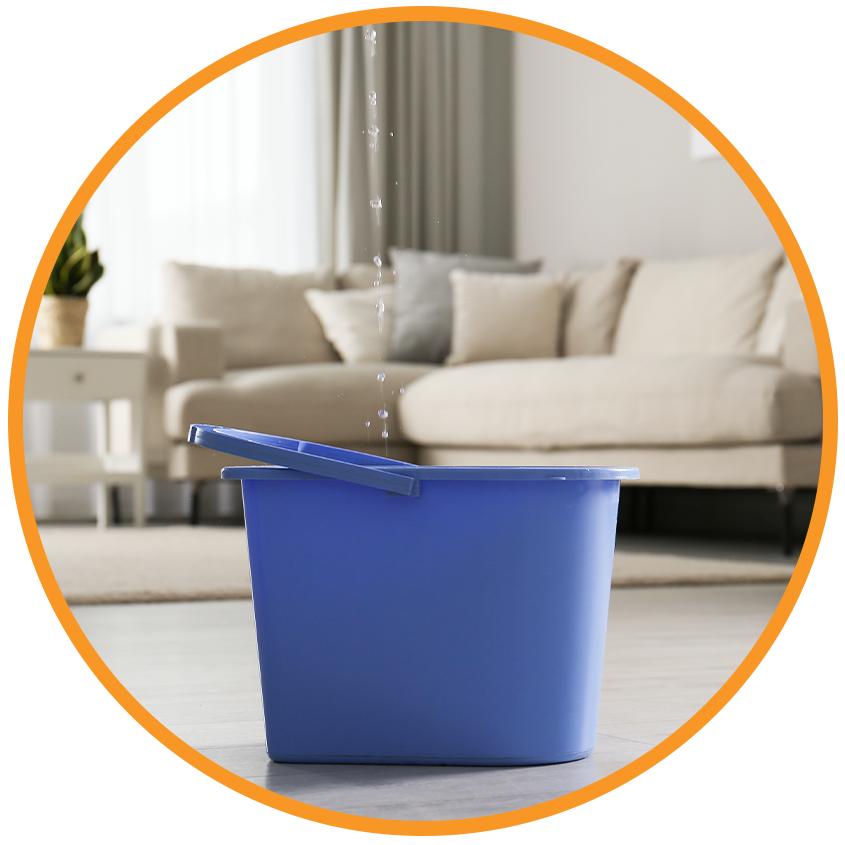The Varied World of Water Damage Types: A Homeowner’s Guide

The Varied World of Water Damage Types: A Homeowner’s Guide
Water damage types can wreak havoc on your property, turning a minor inconvenience into a significant disaster. Understanding the nuances of these types is crucial for any homeowner looking to protect their investment. By familiarizing yourself with the different kinds of water damage, you can spot early warning signs and respond swiftly. This guide offers insights into various water damage types and practical tips to safeguard your home. Implementing proper
can significantly reduce the risk of water damage.
Exploring Water Damage Types: The Four Key Categories
Water damage types can be grouped into four distinct categories, each presenting unique challenges and potential health risks. Recognizing these types is essential for effective prevention and remediation.
1. Clean Water Damage: The Most Harmless
Clean water damage refers to water from uncontaminated sources, often considered the least severe of the water damage types. Sources include:
- Rainwater
- Melting snow
- Broken water supply lines
While clean water might seem innocuous, rapid attention is essential because stagnant water can lead to secondary issues like mold development. Many homeowners overlook the importance of
in water damage prevention.
2. Gray Water Damage: Proceed with Caution
Gray water damage arises from sources that may contain harmful substances. Examples of gray water include:
- Water from dishwashers
- Water from laundry machines
- Sink drain overflow
It’s critical to handle gray water with care, as exposure to contaminants can pose health risks. Ensure proper cleanup to mitigate these risks.
3. Black Water Damage: The Dangerous Reality
Black water damage represents the most severe of the water damage types, containing pathogens and toxins from unsanitary sources. Common sources include:
- Sewage backups
- Flooding from rivers or lakes
- Toilet overflows
Because black water is highly contaminated, professional remediation is essential to ensure safety and prevent further damage.
4. Natural Disaster Damage
Natural disasters can cause various water damage types, depending on the nature of the event. Flooding from hurricanes, storms, or heavy rainfall can result in extensive damage requiring prompt attention. Educating yourself about
will empower you to protect your investment.
Signs You’re Experiencing Water Damage
Being able to identify the signs of water damage types can save you from costly repairs in the long run.
Visible Indicators
- Water stains, discoloration, or peeling paint.
- Swelling or buckling in wooden structures.
- Mold growth or musty odors.
- Damp carpeting or a noticeable increase in humidity levels.
Physical Symptoms
- Condensation on windows or walls.
- Unexplained increases in utility bills due to leaks.
- Soft or sagging ceilings and floors, indicating moisture accumulation.
Behavioral Signs
- Noticeable changes in air quality or a persistent musty smell.
- Frequent incidents of plumbing issues, suggesting ongoing leaks.
How to Protect Your Home from Various Water Damage Types
Taking proactive measures can help prevent the occurrence of water damage types in your home.
Regular Maintenance (A Must)
- Check roofs for missing shingles or damage.
- Inspect plumbing regularly for wear and tear.
- Keep gutters free from debris.
- Ensure proper drainage around your property.
Quick Response to Incidents
- Promptly address appliance leaks or plumbing issues.
- Remove standing water as soon as it is safe to do so.
- Use dehumidifiers to mitigate dampness quickly.
Professional Assistance
In cases of extensive damage or the presence of black water, consider hiring professionals. They can:
- Assess the situation accurately.
- Provide effective water extraction.
- Offer restoration and repair services for lasting solutions.
Frequently Asked Questions (FAQ)
What are the main types of water damage?
The main water damage types are clean water damage, gray water damage, black water damage, and natural disaster damage.
How can I identify the type of water damage in my home?
Look for visible signs such as stains, odors, or the sources of the water. Clean water typically comes from uncontaminated sources, while gray water and black water require a careful approach.
Why is immediate action important for water damage?
Immediate action can help reduce the extent of damage, prevent mold growth, and protect personal belongings. Quick action preserves both health and property.
Is all water damage covered by homeowners insurance?
Insurance coverage can vary significantly. Check your policy to see which types of water damage are covered and consider endorsements for specific risks.
What should I do if I suspect mold growth?
If you suspect mold due to water damage types, it is crucial to seek professional help for safe removal and remediation to avoid health complications.
By understanding the water damage types and their specific characteristics, you empower yourself to take protective measures. Don’t let water damage catch you off guard; instead, be proactive in preparation and response.
What Are The Unrivaled Benefits Of A Fluoride Filter System For Your Home?

Benefits of having a fluoride filter system in your home extend beyond just access to clean water; they encompass health, taste, and overall well-being. Fluoride, while beneficial for dental health in small amounts, can have negative effects when consumed in larger quantities. This is where a fluoride filter system comes in handy, allowing you to enjoy the advantages of clean water without the downsides of excessive fluoride exposure.
First and foremost, a fluoride filter system can help in significantly reducing the amount of fluoride in your drinking water. Many municipal water supplies contain fluoride added for dental health, but studies have shown that long-term exposure to high levels of fluoride can lead to various health issues, including skeletal and dental fluorosis. With a filter, you can ensure that you and your family consume water that meets your desired fluoride levels. This is particularly important if you have young children, as they are more susceptible to overexposure.
SoftPro Bone Char Carbon Water Filter
Moreover, installing a fluoride filter system ensures that you have the freshest-tasting and highest-quality water. Chlorine, heavy metals, and other impurities can affect the taste and smell of your tap water. A good fluoride filter not only targets fluoride but also other contaminants, leading to a more palatable drinking experience. You’ll find that your cooking, tea, and coffee tastes better when using filtered water, enhancing your overall culinary experience.
Another benefit of a fluoride filter system is the cost savings it can bring to you in the long run. Bottled water can be expensive and contributes to plastic waste. By investing in a filter, you can significantly reduce your reliance on bottled water, thus saving money and promoting environmentally friendly practices. Additionally, many filters have a long lifespan and require minimal maintenance, making them a smart choice for anyone looking to simplify their water purification routine.
An often-overlooked advantage is the peace of mind that comes with knowing your water is clean and safe. When you install a fluoride filter system, you take control of your household’s water quality. This can alleviate worries about contaminants that could impact your health or that of your loved ones. You can confidently provide water for your family, reassured that it meets your health standards. Source:
Furthermore, fluoride filter systems are versatile and can be installed in various ways depending on your needs. Whether you prefer a pitcher, faucet-mounted filter, or an under-sink system, you can choose a solution that fits seamlessly into your lifestyle. Many of these systems are easy to install and maintain, ensuring that you won’t have to compromise on convenience for quality.
In the end, embracing a fluoride filter system presents you with numerous benefits that go beyond just improving the quality of your drinking water. From enhancing taste and reducing health risks to cost-effectiveness and environmental sustainability, the advantages are clear. Investing in a fluoride filter system can provide your home with the clean, safe water vital for your family’s health and well-being. does filter remove fluoride

